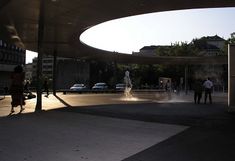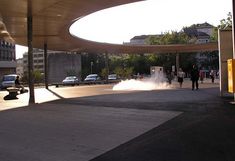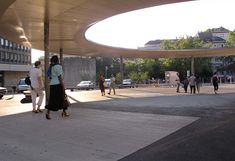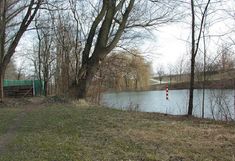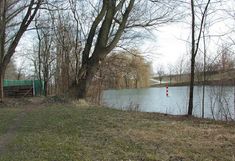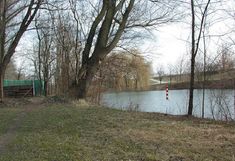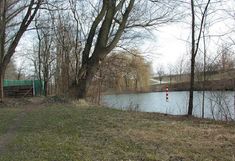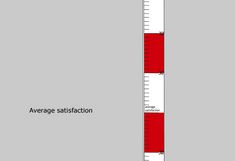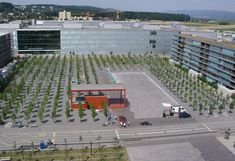Landscape X-periments - about landscapearchitectural design approaches
Lilli Licka, Head of ILA, Institute of Landscape Architecture / BOKU Vienna and KoseLicka Landscape-x-periments Lilli Licka We would like to investigate innovative design approaches to landscape architecture and to creating suitable, usable, well designed, planned and maintained open spaces. The term ‘experiment’ can be defined differently. It is used to subsumise innovative efforts for and beyond design processes and landscape architectural theory in search of answers to everchanging prerequisites and frameworks in the public or semi-public realm. 1 Variable Experiments, Variable Landscapes 2 Changing Perceptions and Generating Conscience 3 Desing process: Exploration versus Experimentation 4 Landscape Architecture Products as Experiments 1 Variable Experiments Classical experiments work with variables. The experiment itself, however, can be a variable, too. Experiment In the scientific world experiment is clearly defined: Experiment is a method to revise hypothesised conditions by observation. Mainly in natural sciences but also in social research and psychology experiment is used to verify or falsify a hypothesis by observing a sequence under controlled conditions. An experiment has to be repeatable. The conditions or variables are manipulated in order to detect the interdependencies of influential factors. External influences are to be excluded, which is why experiments are very often carried out in a laboratory under controllable undisturbed conditions. Validity of an experiment is evident if several repetitions show identical results. The term ‘experiment’ is also applied for contexts outside scientific proof: In contexts of creative professions experiment is frequently used as a synonym for innovation in respect to the applied methods, to working conditions and to public discussions. The Vienna Forum for Experimental Architecture for instance provides a space for exhibitions and discussions about innovative architecture and design approaches. They want to trace and specify latent, emerging, yet unknown trends. In this respect experimental means new, the term is defining a procedure, a process or a product which stands outside the well-known, the overall experienced, the long-term approvation. The Austrian Federal Chancellery edits a call for experimental Architecture more or less biennially. The intention is to support and motivate young architects in developing new ideas, thus in innovating the profession. There is no price to win at the landscape-x-periment’s conference, I am afraid, even if that might be an excellent idea to support young colleagues and students working at innovative solutions for future landscapes. In Landscape Architecture ‘Experiment’ are used for book titles such as “Dutch Landscape Architecture between Tradition and Experiment” (Smienk, Gerrit 1993), for book-promotions (such as the guide to Berlin-LA projects by Callwey, saying that Berlin is well known for experimental landscape architecture since the fall of the Berlin wall due to a lack of money) (www.arclife.de), for a(former) research focus called “History of Garden Art and Experimental Landscape Architecture” at the University Hannover (http://www.tt.uni-hannover.de/UniForKat/viewKatalog.cfm?ID=154) and of course there are several studios promoting their up-to-dateness with the term “experimental”. Landscape Despite the urge of many disciplines and scholars to define landscape, there is still a wide range of angles from which landscape can be looked at. Basic point of discussion remains the relationship between nature and landscape as well as between landscape and man. In his article “Man in the landscape” the philosopher Otto Neumaier explains that man is searching for the ‘whole’ in nature. It is, he explicates, impossible to find in the landscape, because we only look at a clipping of it. These entities are defined as landscapes (and reproduced as well as reflected in art) (Neumaier 2006:117). Still those landscapes maintain a close relation to nature , an even closer one in terms of the viewer’s emotions and associations. In the recently edited new lexicon for landscape architecture Meto Vroom defines landscape as follows: “In various languages, the etymology of the word is complex (Bourassa 1991; Spirn 1998; Hunt 2000), its elaboration showing the difficulty of formulation a definition which covers all possible angles of view. The Descartian separation between subject and object allows us to describe the ‘land’ of landscape as a territorial entity, to be analysed objectively in its components,[…] However, the ‘scape’ – the landscape of our daily living environment – is what we see, with its meanings, and also with its stories of the past and present, which raise our expectations and emotions.” (Vroom 2006:177) Landscape is a cultural product. Therefore landscape architecture is a field of cultural production. Landscape exists of physical layers as well as of layers of different significance. Its natural basis is of course determining the potentials for design and usage. For our perception its ‘nature’ is important, for its ecological and climatic function natural sciences and resources are essential, for its collective socio-cultural significance, however, the cultural interpretation is decisive. The landscape’s cultural dimension is not restricted to beauty, aesthetics or beaux-arts. It is about individual and collective imprints, socio-cultural definitions and behaviour. It is furthermore about political priorities and monetary restrictions. The recent development of these factors ask for innovation as well in design solutions as in design processes and their theoretical reflections. Moreover landscape is not static but is a continuous process of alteration and development. As landscape architects we interfere in this process. Definitions adapt to alteration, which has also happened to the term ‘landscape’: Even if it had emerged from the differentiation between “land” and “city”, thus the rural and the urban, this dichotomy is now resolving as the borders between the two are blurred in many ways. ‘Scapes’ in this respect are evolving from the holistic approach of architecture and landscape. Whereas architects and planners had looked at landscape as the opposite to building, perhaps even as the prospect, the background to their product, the term landscape is now used for the entity of both built up and non-built-up areas. (see Licka, et.al 2006:7) As shown through recent discussions, through a number of publications and lectures, ‘landscape’ has become newfangled within the design world due to the blurring of spatial phenomena. In the beginning of the 1990ies professional discussions in the field of Landscape Architecture focussed on the design quality of urban open spaces based on the flamboyant new squares and parks of Barcelona. In France the grand projets flourished literally, providing an enormous amount of perennials and other plantings in parks and gardens. Autochtonous history of former industrial sites formed the conceptual background of new parks and gardens in Germany. These projects are rooted in the economic and political development in Europe. Of course this is an ongoing process. Cities are converting, new economy is getting hold of the open space management. Social segregation is increasing. In order to meet continuously changing requirements, new answers have to be found through and beyond design and design processes. 2 Changing perceptions and awareness of landscapes Interventions are a well known means to sharpen perception and observance by changing habitual views of every-day situations. Displacement, reinterpretation by a different usage, or labelling can achieve new perceptions through temporary installations, static or moving, or placement of objects. Experimental actions aiming at the change of perceptions are interdisciplinary, very often hybrids of art, social intervention, design, architecture, landscape architecture. Artists, architects and landscape architects have long converged in the field of installations and temporary action. On the one hand the blurring boundaries between disciplines help to meet the complexity in which open spaces, specially public open spaces are created, used and perceived. On the other hand the distinction between the open space design and the (virtual) reality of in-between-usage, of various interpretations, of continuous changes becomes more and more difficult. What Bartholomeo Pietromarchi describes for art in the documentation “The (un)common place”, is valid for any intervention in open spaces. He states, that “in a territory in which art and the real end up resembling one another, hybridization practises become strategies of interpretation. (Pietromarchi 2005:10)”. There might thus even be a new relationship between art and landscape architecture overcoming the misinterpretation of any creative production in or with nature as ‘land art’. Artistic interventions changing perceptions raise the awareness of every-day-surroundings and situations. In Gordon Matta Clarks cuttings this process is very obvious. They are showing an exceptional treatment of buildings, being our every-day environment, reducing them to objects and exposing their innards to the public. In the Lexicon of modern art they are listed under “architectural interventions” (Susanne Titz 2006:18) Dealing with landscapes means coping with linear and periodical changes and evolutionary processes. In the project “full satisfaction” the variation of the Danube’s water level is performed. In the former inundation-area of the alluvial forest, which is now cut off the stream by a high-water-protection-dike, two fishponds are used to expose the rise and fall of the water level to the passers-by. The project is completely artificial, the water is being pumped into and out of the basin at a much higher speed than the natural process of inundation takes place. The rule makes the rise and fall legible. The mark “Full satisfaction” offers a mean association, marking the height of the complete flooding of the town of Krems/Austria. T his installation seems very banal, the only obvious sign is the levelling rule. Once having noticed the changes in the pond, however, it tells the history of the landscape. Titz emphasis the strength these interventions draw from their relation to time as well as from a “movie-like narration; and this narration substitutes any other explanation,” she quotes. (Krauss, cit. in: Titz 2006:22) In the movie-project for Düsseldorf’s art exhibition ‘hell-gruen’ in 2002 the artists make use of the exhibition of landscape in the movie in a very literal way. By posing a movie-hall into the park, which is equipped with typical movie-chairs and a pathetic soundtrack, the park is transformed into a scene. Promenaders become actors, the scenery becomes a movie-setting. The staging which is inherent to the design of an English landscape garden, like the Hofgarten in Düsseldorf, is performed. These examples show that the artists goal is not (only) the production of their own creative product but the interaction between their product and the people. As Pietromanchi puts it, the artist “does not place his creativity at the service of the community, but rather liberates the community’s own creative potential which can in turn be converted into social imaginerary reconfiguration that experiments with new forms of human relations.” (Pietromanchi 2005:11) Interventions where people are invited to participate are a step forward from changing perception and awareness towards people’s creativity to appropriate and interpret their surrounding open spaces by themselves. The more unusual and provocative these interventions are, the more effect they achieve. Some more actions will be described in the lectures during the day. 3 Desing Process: Exploration versus experimentation? In fact writings about landscape architecture have in every period stated, that at the time, landscape had become popular and dealing with it was essential for the world and/or society to survive. Susan and Geoffrey Jellicoe start their introduction of “The Landscape of Man” which was first published in 1975 with the words: “The world is moving into a phase when landscape design may well be recognised as the most comprehensive of the arts.” (Jellicoe 1995: 7) Landscape Architecture has always been a complex task. While exploration is analytical experimentation is action-oriented. A lot has been written about design methods in landscape architectural literature. (Swaffield 2002, Vroom 2006, Prominski 2004) The processes are described as an iterative sequence of steps from research via analysis towards synthesis. Synthesis being a ‘logical’ outcome as a design for the place. This linear process never happens. Some scholars even tried to prove that all the decisions along the way can be objectively right. In 1962 Christopher Alexander, who was born in Vienna in 1936 worked out a system for the decisionmaking-processes based on a computer like option between the answers: yes and no. This method was bound to fail because there is never a one and only ‘thruth’ to design. (Alexander abolished this thesis and turned to writing the generative grammar of a pattern language showing a more socio-cultural approach towards urban landscapes). Necessities can be influenced by a wide range of facts and circumstances some of them being completely unpredictable. Reflecting on the scientific background to design Martin Prominski, whom you will hear in the afternoon, calls unpredictability together with relationality and processuality the triad of complex thinking. (Prominski 2004:49) One could conclude that the experimental proof as a result of deductive theory and approach is delusive. Following critical theorists the complex conditions for Landscape Architecture imply that “Landscape theory is specific, not general.” (Meyer 2002:2) “Like Feminist criticism,” Meyer explains,” landscape architectural design and theory are based on observation, or which is known through experience, or the immediate and sensory – that which is known by all senses, not only visual. Thus landscape architectural theory is situational – it is explicitly historical, contingent, pragmatic and ad hoc. It is not about idealistic absolute universals. It finds meaning, form and structure in the site as given.” (Meyer 2002:2) Recent projects around the world, however, show growing congruence of design solutions. Designs carried out by global players of landscape Architecture running world-wide-studios, hardly differ from each other. If the ‘landscape market’ has gone global, does this mean that the situationist approach is obsolete? In her article about the migration of forms Malene Hauxner states, that there have always been icons, even in landscape architecture, which were copied numerously. Articles, books or even mere pictures helped to spread ideas and images. (Hauxner 2006). Of course there are several trends emerging simultaneously. While the one of prefab solutions is selling well world wide, a more site-specific approach is being promoted at the same time allowing experimentation with local features, settings or problems such as mobility, accessability, usability, sustainability…. As mentioned above, experimentation can be utilised to support the creative process becoming a method of design. To a certain extent the pure form is coincidental, always expressing contemporary cultural tendencies. Moreover, form is a product of the “accessible tools, which influence their products.” (Merx 2005: 48) Many of the so called experimental examples in architecture and design emerge from creative software-programs. In a way it is comparable to Christopher Alexander’s impulse to prove the “right design” by technical means. Within the design process deciding about the form is always challenging. The creative act is individual. Functional reasons often dominate this decision. Experiment and determination seem to be antipodes. There is, however, always a choice to be made, how much has to be defined and what can be left to individual interpretation to the users. Some degree of openness allows adaptation and changes during the project’s life time. Also experimentation being undetermined might help to find unpredictable solutions. Some recent projects deal with this tension between predefined models and experiments, allowing people and projects to develop further on. 4 Landscape Architecture Products as Experiment As stated before, landscapes are not static, nor topped off after the building process is completed. Parks, gardens, open spaces can at first be seen as products of the designers cultural interpretation. So it is our own imprint which we find back in the projects. These imprints determine our options, which “result from a collection of individual cultural sediments, we carry inside” (Kienast 2002:172). Even if it is not ONE architect or designer but a group and even if the design process was participatory the space is submitted to perceptual interpretation, physical adaptation and functional changes after completion. Landscape architecture is thus a setting, where a result is offered, which is interpreted and changed by people using it. Landscape is perceived differently by individuals. This transformation through communication between subject and object is described by Marcel Duchamp in his booklet: “Der kreative Akt” as follows: “To avoid misunderstandings, we have to consider, that the art coefficient represents a personal expression of art “á l’état brut”, thus in a raw state, which has to be refined by the visitor like molasses to pure sugar;….” (Duchamp 1992:11). In contemporary projects and processes adaptation and appropriation is declared a decided goal of landscape architectural design. This has already been verbalised by Adriaan Geuze some 13 years ago, when he wrote: “The point is to create spaces and textures which the city dweller is colonising on his turn.” (Geuze 1993: p.20) This leaves the completed work in a state of uncertainty, staying abreast of societal, economic and ecological changeability. On the one hand this is a big challenge on the other it is part of the thrill of our profession. It made Georges Descombes change from building to landscape architecture, sharing the “increasing interest in movements and shifts of territory, specifically landscape experiences more than the apparent fixity of buildings and objects.” He explaines, that he has “therefore come to consider (his) work in provisional terms, as speculative constructions that are produced and transformed through continual reshaping processes: weather, seasons, light, growth, erosion, deposition. … This process never ends, and one ought to appreciate all the possible future developments that are already inscribed in the land…. (Descombes 1999: 79) I guess as landscape architects and scholars we share the allurement of dealing with landscape, with sites that follow rules of their own. The period of development is reaching from the past into the future, never coming to a complete halt. It is the hidden quality of projects that form a special attraction, including not only the subsurface but also the layers of history and meaning. Descombes describes this fascination as follows: “Through inscribing a project on the memory of a terrain, one gives to a site the opportunity to project into the future, to find a renewed place and value in the cultural imagination. To design for sites with this principle in mind is to perform an action that allows for reflection on totally ordinary matters – a shift in sensibility. Perhaps the matters that are not noticed are those that are essential.” (Descombes 1999:85) Conditions are shifting at an increasing pace challenging landscape architecture as a design profession. The late Dieter Kienast’s assessment of the situation is ambivalent. On the one hand he states, that „it is a fact that our actual societal, political and religious situation is in abeyance and there is hardly anything we can do about that. The longer this state of abeyance lasts, the more we hook on to principles and models.” (Kienast 2002: 173) On the other hand he shares the “excitement” about this untertainty because it „offers the opportunity to move around untroubled and give things a try. (...) If there is something specific about our work than it is continuous trial and error. (Kienast 2002:174) 5 Conclusion In the field of Landscape Architecture experiments could change perception and awareness of landscapes, they are a creative part of the design process, where potentials are explored and solutions are projected. Finally Landscape Architectural products themselves can be defined as experiments, being approved or disapproved by the people using, seeing, adapting, changing and enjoying them. LITERATUR Armstrong, Helen (1999): Design as Research, An Emerging Research Paradigm For Landscape Design Educators, in: Landscape review Butin, Hubert (Hg) (2006) : DuMonts Begriffslexikon zur zeitgenössischen Kunst, DuMont, Köln Corner, James (1999): Recovering Landscapes, Essays in Contemporary Landscape Architecture, Princeton Architectural Press, N.Y. Descombes, Georges (1999): shifting Sites: The Swiss Way, Geneva, in: Corner, James (1999) p. 78-85 Duchamp, Marcel (1992): Der kreative Akt, Duchampagne brut, Edition Nautilus, Hamburg Geuze, Adriaan (1993): Accelerating Darwin, in: Smienk, Gerrit (red.): Nederlandse Landschapsarchitectuur tussen traditie en experiment, Amsterdam Hauxner, Malene (2006): Entweder/oder, weniger und mehr – wie Formen und Ideen wandern, in: Stiftung LAE: Fieldwork, Landschaftsarchitektur in Europa, p.44-53 Jellicoe, Geoffrey and Susan (1995) The Lanscape of Man, New York Kienast, Dieter (2002) Professur für Landschaftsarchitektur ETH Zürich (Ed.) Die Poetik des Gartens, Über Chaos und Ordnung in der Landchaftsarchitektur, Birkhäuser, Basel Licka, Lilli (2006): In:Zwischen, in:Institut für Landschaftsarchitektur und Raumplanungsabteilung des Landes Vorarlberg (Hg.) In:Zwischen, von bebauter und unbebauter Landschaft, Bregenz Wien, S. 6-10 Magistrat der Stadt Krems, Stadbaudirektion (Hg.) (2001) (Spontane Gärten) Krems Stadt im Aufbruch, Krems Merx, Luc, Holl, Christian – Gagat International (2005): Rococo Relevance, in: Verb (2005), p. 44-57 Neumaier, Otto (2006) Der Mensch in der Landschaft, in: frame, the state of the art, 16/17, März/April 2006 Vienna p.116-118 Pietromarchi, Bartholomeo (2005) the (un)common place, art, public space and urban aesthetics in europe, Barcelona Prominski, Martin (2004): Landschaft Entwerfen, Zur Theorie aktueller Landschaftsarchitektur, Reimer Verlag Smienk, Gerrit (red.) (1993): Nederlandse Landschapsarchitectuur tussen traditie en experiment, Amsterdam Stanislaus Fung (1999): Mutuality and the Cultures Of Landscape Architecture, in: Corner, James (1999), p. 140-151 Swaffield, Simon (2002): Theory in Landscape Architecture, A Reader, University of Pennsylvania Press, Philadelphia Titz, Susanne (2006): Architektonische Intervention, in: Butin, Hubert (Hg) (2006) p. 18-23 Verb (2005): Conditioning, the Design Of New Atmospheres, Effects and Experiences, Actar boogazine, Barcelona Vroom, Meto J. (2006).: lexicon of garden and landscape architecture, Birkhäuser, Basel

